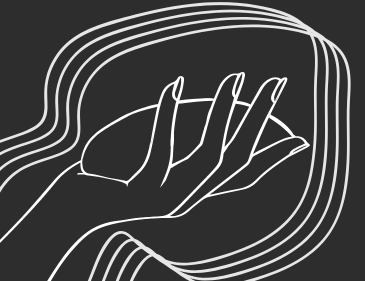If individuals are considering breast reduction (mammaplasty) surgery, they’re not alone. Many individuals with larger breasts experience discomfort and find it challenging to engage in physical activities. Breast reduction, or reduction mammaplasty, is a surgical procedure designed to alleviate these issues by removing excess fat, breast tissue, and skin.
This guide will individuals through everything that they may need to know about breast reduction (mammaplasty) surgery, from reasons for considering it to preparation, recovery, and what to expect.
Why People Consider Breast Reduction (Mammaplasty) Surgery
Breast reduction (mammaplasty) surgery is often pursued by those who suffer from physical and emotional challenges linked to larger breasts. Some of the common reasons people consider this surgery include:
1. Physical Discomfort
Large breasts can lead to chronic back, shoulder, and neck pain. The additional weight of excess breast tissue can strain the body, resulting in discomfort that might make everyday tasks difficult. There are many patients reporting that after surgery, they experience a significant amount of relief from these aches and pains.
2. Skin Irritation
Individuals with larger breasts may also deal with skin irritations, such as rashes or grooves caused by bra straps digging into the shoulders – breast reduction (mammaplasty) can alleviate these conditions, leading to improved skin health and comfort.
3. Self-Image and Confidence
Unfortunately, for many, large breasts can contribute to a negative self-image. Breast reduction (mammaplasty) surgery may help improve confidence, allowing patients to feel more comfortable in their skin and participate in activities they may have avoided in the past.
4. Improved Physical Activity
If individuals have found that breast size limits their ability to engage in sports or physical activities, breast reduction (mammaplasty) may open up a world of possibilities. Many patients report that they can exercise more comfortably and effectively after surgery.
5. Clothing Fit
Finding clothes that fit well can be a challenge for those with large breasts. Breast reduction (mammaplasty) may make it easier to find bras and clothing that fit properly and flatter an individual’s shape.
Who Is a Good Candidate for Breast Reduction (Mammaplasty) Surgery?
While breast reduction (mammaplasty) surgery can be beneficial, it’s important each candidate is assessed carefully and thoroughly. Typically, candidates for this surgery:
- Experience physical discomfort due to breast size
- Have realistic expectations
- Are physically healthy, as certain medical conditions may pose risks during surgery
Considerations Before Surgery
Not everyone is an ideal candidate for breast reduction (mammaplasty). Factors to consider include:
- Smoking: Smokers may face increased risks during surgery and may be advised to quit before and after the procedure.
- Obesity: Significant weight loss should generally be achieved before considering breast reduction.
- Age and Breast Development: While breast reduction can be performed on teenagers, it’s important to wait until breasts are fully developed to avoid the need for future surgeries.
Preparing for Breast Reduction (Mammaplasty) Surgery
If an individual has decided to proceed with breast reduction (mammaplasty) surgery, preparation is key. Here is what is expected in the lead-up to the procedure:
Consultation with a Board-Certified Surgeon
A consultation with a qualified plastic surgeon is essential. During this appointment, the surgeon will:
- Review an individual’s medical history and overall health.
- Discuss the desired outcomes and the size and shape envisioned post-surgery.
- Explain the surgical procedure, including surgical risks, benefits of breast reduction, alternate procedures and recovery expectations.
- Conduct a physical examination, which may include taking photographs of the breasts for medical records.
Recommended Read: Choosing a Plastic Surgeon: All of Your Questions Answered
Pre-Operative Guidelines
Before surgery, the surgeon may recommend:
- Medical Tests: A mammogram might be necessary, especially if the patient is over a certain age or has a family history of breast cancer.
- Current Medications: It’s likely individuals may need to avoid aspirin, anti-inflammatory medications, and herbal supplements that could increase bleeding risk.
- Smoking Cessation: If individuals smoke, they’ll need to quit at least six weeks before and after surgery to promote healing.
Arranging for Recovery
Since breast reduction (mammaplasty) surgery typically requires anaesthesia, patients’ will need someone to drive them home after the procedure. It’s also wise to prepare a recovery area with necessities, including pain medication, loose-fitting clothing, and plenty of snacks and water.
Recommended Read: Six Strategies to cope with Pre-Procedure Anxiety
What to Expect During the Surgery
Breast reduction (mammaplasty) surgery usually takes several hours and is performed under general anaesthesia. Here’s a breakdown of the process:
Surgical Techniques
There are a few different surgical techniques the surgeon might use, depending on the individual needs:
- Incisional Techniques: The surgeon makes incisions around the nipple and down each breast, removing excess tissue, fat tissue, and excess skin.
- Liposuction: This method may be used to remove fat from the breasts, especially if the patient may have a significant amount of fatty tissue without excessive sagging.
- Nipple Repositioning: The surgeon will reshape the breasts and reposition the nipple and areola to create the desired outcome..
While the surgeon aims to make both breasts look as symmetrical as possible, some differences in size and shape may remain.
Recovery After Breast Reduction (Mammaplasty) Surgery
Immediately After Surgery
Following the surgery, patients breasts will be covered with bandages and possibly a surgical bra. The patient may receive medications to manage pain and reduce the risk of infection. Here’s what to look out for:
The First Week
In the initial days post-surgery, it’s common to experience:
- Swelling and Bruising: Expect some tenderness, swelling, and bruising as the upper body heals.
- Support Garments: Patients’ may need to wear a surgical bra continuously to provide support and aid in recovery.
Long-Term Recovery
As patients progress through recovery:
- Physical Activity: It is recommended to limit physical activity for 4 to 6 weeks to allow the breasts to heal properly.
- Follow-Up Appointments: Regular check-ups with their surgeon will ensure that the patient is healing correctly and to address any concerns.
The Results: What to Expect Long-Term
As mentioned, there are quite a few reasons people consider breast reduction (mammaplasty) surgeries; here are a few results patients’ may expect after a (mammaplasty).
- Relief from Pain: Many report a dramatic reduction in upper back, neck, and shoulder pain.
- Improved Mobility: Increased ability to engage in physical activities without discomfort.
- Improved Self-Image: Many women may feel more comfortable in their bodies after surgery.
Longevity of Results
While the results of breast reduction (mammaplasty) surgery are often long-lasting, factors like ageing, weight fluctuations, and pregnancy can affect breast size and shape over time (regular follow-ups with their surgeon can help monitor any changes).
Frequently Asked Questions
How Painful Is a Breast Reduction (Mammaplasty) Surgery?
Pain levels can vary from person to person, but many patients report feeling discomfort rather than severe pain after breast reduction surgery. The surgeon will prescribe pain relief medications to help manage any discomfort during the recovery process. Most patients experience soreness, tenderness, and swelling in the initial days following the surgery, which typically improves significantly within a week or two.
What Size Breasts Qualify for Reduction?
There isn’t a specific size that qualifies for breast reduction (mammaplasty), as candidacy is more about the symptoms caused by breast size rather than a particular measurement. Generally, individuals who experience chronic pain, discomfort, or functional limitations due to large breasts may be eligible for the procedure. It’s best to consult with a board-certified plastic surgeon, who can assess the situation and determine if surgery is appropriate for each individual.
What Does No One Tell You About Breast Reduction (Mammaplasty)?
One aspect that is often overlooked is the emotional adjustment after the surgery. While many expect physical relief and improved aesthetics, it’s important to consider the psychological effects, such as adjusting to a new body image and potential changes in self-esteem. Additionally, patients’ may experience some swelling that can last for several weeks, and your final results may not be apparent until months after the surgery. Regular follow-up appointments with their surgeon can help you navigate these changes.
How Long Does It Take to Recover from Breast Reduction?
It depends as recovery time varies by individual, but most people can expect to take about 4 to 6 weeks to heal fully. Patients’ are likely return to light activities within a week, but should still avoid strenuous exercise and heavy lifting during this period. Many patients find that their swelling decreases significantly within the first few weeks, and they can resume normal activities in about a month. However, complete healing and final results can take several months to manifest fully; always follow their surgeon’s post-operative care instructions for the best outcome.






